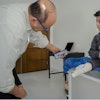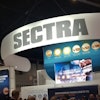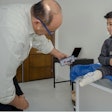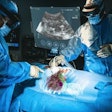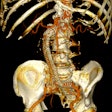
The increased use of imaging means you can no longer assume all radiology reports will be acted upon by clinicians, so it's vital to consider implementing a computerized alert system for dealing with clinically significant, unexpected findings, according to Irish researchers.
"Communication between radiologists and clinicians is an increasingly important aspect of patient management, especially in the era of multiple radiological examinations being performed depending on a patient's presenting complaint," noted lead author Dr. Karl James, a second-year specialist registrar in radiology, and colleagues from the department of radiology at Cork University Hospital in the Republic of Ireland, in an e-poster presented at ECR 2014 in Vienna. "There is a shared responsibility between clinicians and radiologists to ensure that delays in diagnosis do not occur, and this study highlights that a well-organized system can limit communication failures."
In their department, a "Rad Alert" system has been set up. When an unexpected finding crops up, the radiologist can select an icon on the PACS workstation and directly contact the referring clinician by email or SMS text message with the patient's details. The referring clinician is then obliged to acknowledge receipt of the Rad Alert by replying to the message. Clinicians who have not acknowledged the Rad Alert are further contacted by email or fax. A clerical staff member then follows up to ensure that all the alerts have been received and to record if the recommended follow-up has occurred.
Looking at the chest radiograph Rad Alerts, it can be seen that previously undiagnosed cancer was confirmed in almost one-third of the alerted cases, and this stresses the importance of the referring clinician being made aware, the authors emphasized. However, their audit highlights the fact that despite a formalized alert system being in place, clinician acknowledgement of alerts is unsatisfactory at 80%, and although the vast majority of patients are followed up appropriately, the potential exists for missed opportunities at the early stage of the disease.
All patients for whom a Rad Alert was issued in a one-year period between 2012 and 2013 were included in the group's study. Of the 373 Rad Alerts issued, the majority (47%) was due to findings on a chest radiograph. About 85% of CT and MRI studies were reported in less than two days, and 89% of plain radiographs were reported within five days. Possible cancer diagnosis was the main indication for issuing a RadAlert across all modalities, accounting for 44% (165) of all alerts issued.
About 64% (105) of these Rad Alerts were issued due to a chest radiograph, and a follow-up CT thorax was recommended in 98% (103) of these cases. On reviewing clinician response to Rad Alerts made due to possible new cancer diagnosis, 20% (33) of the alerts were not acknowledged. The majority of remaining alerts were acknowledged within five days, the authors reported.
Further follow-up of the unacknowledged alerts found that 85% (28) had the recommended further follow-up. Two cases were patients of respiratory physicians, and further follow-up was deemed not necessary. No discernible follow-up was performed in three of the Rad Alert cases, and these patient details were forwarded for further follow-up.
Analysis of the 103 chest radiographs that were recommended for CT follow-up after the issuing of a Rad Alert revealed that half of patients had the CT thorax performed within a month of the initial chest radiograph. About 22% of patients did not have the recommended CT follow-up for various reasons (e.g., the scan was performed at an external institution, follow-up deemed not necessary due to other patient considerations, etc.).
The findings of the follow-up CT thorax scans revealed a diagnosis of lung cancer in 25% (20) cases with other previously unknown malignancies also identified.
The overall aim of the Cork audit was to assess communication of significant unexpected findings between radiologists and clinicians, and to assess outcome of further patient investigation as a result of the reports. The variables measured included the number of highlighted Rad Alerts per modality, time taken to report on images, and the provisional disease process suspected. Assessment of clinician response to these alerts also was reviewed.
The failure to act on radiology reports is a cause of significant patient safety incidents, and in the U.S., failure by radiologists to communicate radiology results is the third most common cause of litigation against radiologists (Radiology, February 2013, Vol. 266:22, pp. 548-554), according to the authors.
Also, the U.K. Royal College of Radiologists (RCR) has stated that there should be no patient safety incidents as a result of failure to follow up on radiological imaging reports and that all reports should be acknowledged by clinicians within an agreed time frame. Similarly, the Faculty of Radiologists in Ireland recommends in its 2011 Guidelines for the Implementation of a National Quality Assurance Program in Radiology that a clear pathway for communicating critical, urgent, and unexpected clinically significant findings between radiology departments and referring clinicians be defined.
